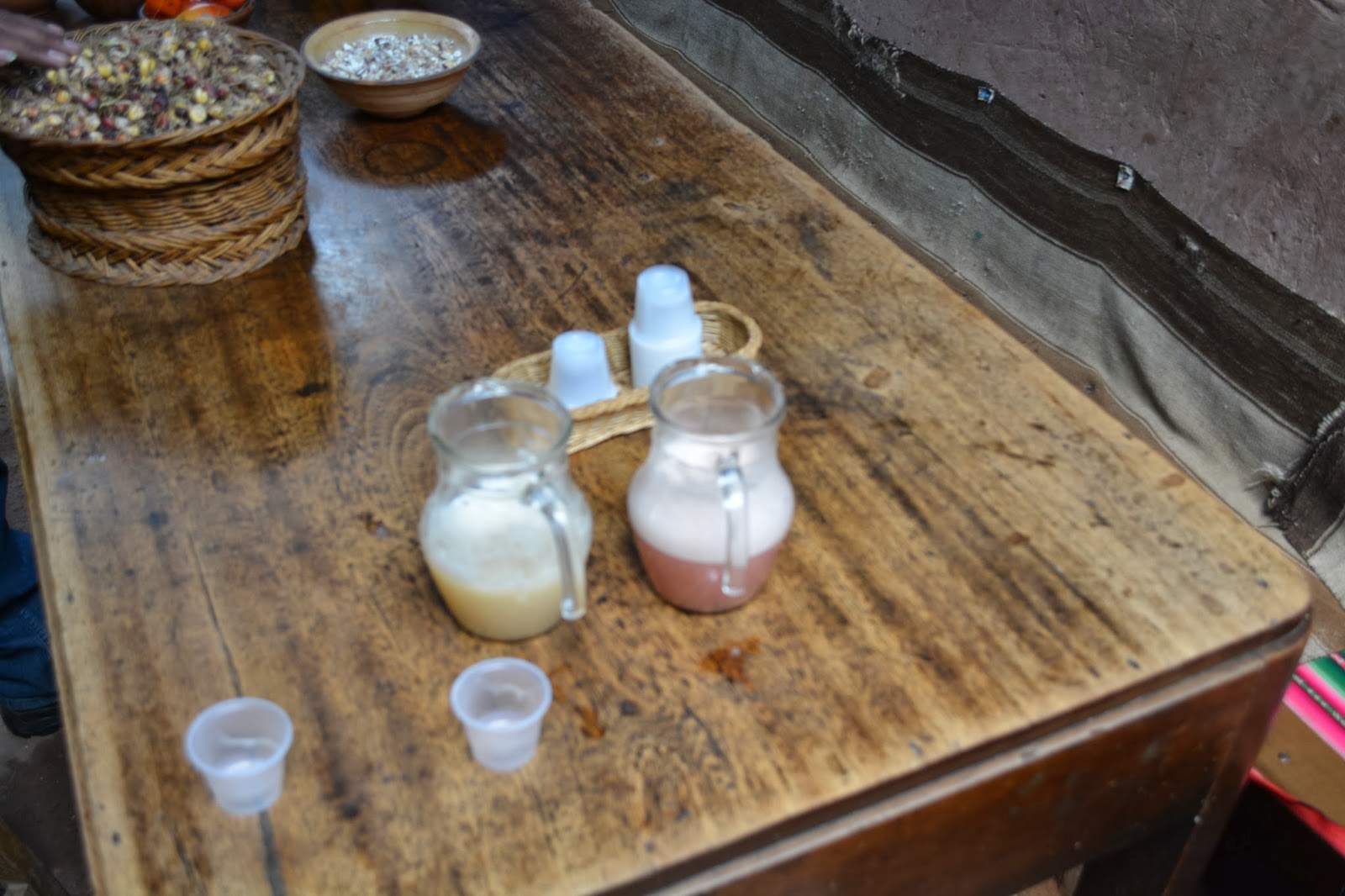So leaving Ollantambo, our first stop was at a home with a long pole reaching to the sky with a red plastic bag attached. This indicates that home makes chicha, a corn alcohol.
So I had the tour, saw the mash, watched it being drained, then boiled and had a taste of two flavors, plain and strawberry .
meanwhile, running around was a batch of guinea pigs and some were caged. These poor things will end up on tables in restaurants, whole! and can be ordered to eat under the name cuy.

 Next stop, Maras, a colonial town, homes made of adobe, many of which were destroyed in the unusual rain storms in La Nino of 2003.
Next stop, Maras, a colonial town, homes made of adobe, many of which were destroyed in the unusual rain storms in La Nino of 2003.
A long twisty dirt road past the village had many locals walking towards Maras to get a bus to the market in Umberto. Some would be riding in the back of trucks..
 Lots of sheep, donkeys and cows along the way to Moray, a circular wonder the Incas built with a drainage system at the bottom and terraces that they developed corn crops each year higher and higher adapting to the altitude.
Lots of sheep, donkeys and cows along the way to Moray, a circular wonder the Incas built with a drainage system at the bottom and terraces that they developed corn crops each year higher and higher adapting to the altitude.
And then to the salt collection terraced community effort. 3000 square boxes on the side of the mountain, where each family could collect salt. It was engineered in such a way that every three days, they opened the gate, water poured in, dried, they removed the salt and did the same process three days later. They have the pink salt here, the second best and now the most exported in the world.
March 5, 2014
Given a package of entry tickets, bus and train tickets and entrance to Machu Picchu, I was off and exploring, so far have seen the ruins at Ollaytambo, Moray and Maras.

























No comments:
Post a Comment